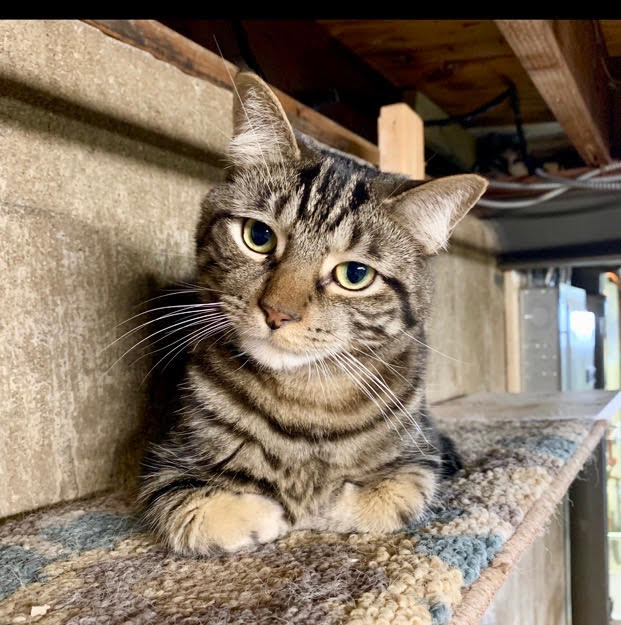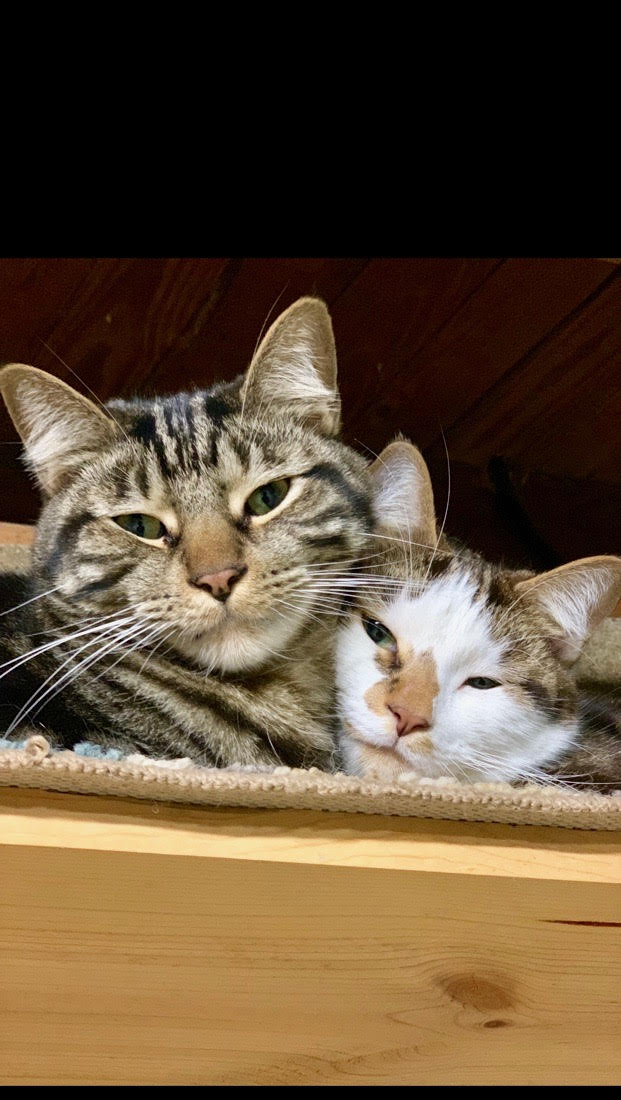30 Jun Displaced Aggression (June 2024)
Remembering our friends of yesteryear and their stories. A cat’s aggression doesn’t always snap back at the offender.
Dog Barks And Ollie Attacks His Bro …
“Ollie, our two-year-old, neutered cat, freaked out when our friend’s little dog barked. He attacked his brother, Chook, which freaked us out. So we contacted our vet (Green Forest Vet Hospital) who referred us to you,” said Cara.
She went on to say that although this dog had visited before, he never barked, and Ollie was friendly with Cara’s parents’ dog who was very low key.
Home visit to Ollie and Chook
As Cara and Gil told me more about their guys, Ollie played with the nip and toys I gifted while my prescribed feel good music played in the background. Chook made a whirlwind appearance before he disappeared into the next room. Ollie was always the front and center cat. The two cats were the classic BFF until the disruptive bark occurred. Now Chook kept his distance from Ollie.
Displaced Aggression
(Dog Angst, Fear Triggers Aggression)
I explained that the dog’s bark startled Ollie. It triggered his fear which turned to aggression, and Chook, his BFF forever, became his tension target.
“It’s always easer to become angry, rather than to experience the painful feeling of fear,” I said.
“I get it,” said Gil, “I’ve been there. So how do we get our guys together again?”
Cara jumped in to say that their cats had a bit of a jump start on The Wilbourn Way. She had read one of the blogs on my site where I recommended that transitions should be verbalized to prevent and defuse transitional angst. So when she told the cats what she was about to do: “Hey guys, I’m standing up, going to the next room, need to open the door,” they looked her way instead of a sudden or delayed startled bolt.
“That’s terrific,” I said, and went on to give them their guys’ treatment program.
Treatment Program for Displaced Aggression
*Play their healing music 24/7 at low volume to recreate the positive feeling and action from their session.
*Continue to announce all transitions so they’re not startled at that moment or have a delayed reaction. (Refer to above paragraph)
*They can be together for short intervals. Separate them before there’s an incident. Don’t wait for one to occur.
*During their together intervals, if catnip is a fave, use and/or toys to redirect their focus. This will re-establish their acceptance of each other when they’re together. Acceptance at a distance!
*As they regain their familiarity comfort, slowly increase their intervals together.
*Tell them they’re doing well, so mellow, and you see their choice is to be together again. Cats respond to your body language and tone of voice which is why they will feel in control when you say this—instead of out of control if they feel dictated to or forced.
*Desensitize. After a week goes by, let them hear a few barks of a dog, e.g a recording from the internet, when you feed or play with them. Repeat the recording so they associate the bark with good stuff instead of fear.
Gil mentioned how the cats had times together where they appeared to be cool, and suddenly Ollie would corner Chook. I explained that it was a reaction to Ollie’s muscle memory where he got a feeling, something reminded him of the “incident” with the dog — recreated his angst, and he displaced this anxious feeling to Chook. So the more relaxed and comfy Ollie becomes, the less he will relive this anxious feeling.
I concluded the session with the reminder for them to send me a progress report and to be in touch with any questions. Ollie escorted me to the door. I’m sure Chook gave a goodbye nod from his perch nearby.
Cara’s update five days later
Hi Carole,
This photo was taken just now! They’re finding a common bond again. Ollie did hiss a little at Chook when he wanted his turn in the window, but definitely an improvement.
One more thing— we especially remember to mention Ollie’s name whenever we interact with Chook and vice versa so they receive equal attention. Whoops, and to quote you: We do this even if our other cat can’t see or hear us. It certainly makes sense that this will chip away at their rivalry.
We will keep in touch, and glad you sent a behavioral case report to their vet.
Best,
Cara & Gil
……..






